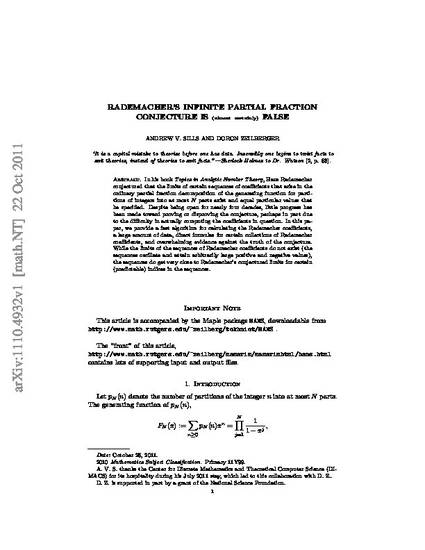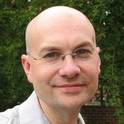
- Education and
- Mathematics
In his book Topics in Analytic Number Theory, Hans Rademacher conjectured that the limits of certain sequences of coefficients that arise in the ordinary partial fraction decomposition of the generating function for partitions of integers into at most N parts exist and equal particular values that he specified. Despite being open for nearly four decades, little progress has been made towards proving or disproving the conjecture, perhaps in part due to the difficulty in actually computing the coefficients in question. In this paper, we present a recurrence (alias difference equation) which provides a fast algorithm for calculating the Rademacher coefficients, a large amount of data, direct formulae for certain collections of Rademacher coefficients, and overwhelming evidence against the truth of the conjecture. While the limits of the sequences of Rademacher coefficients do not exist (the sequences oscillate and attain arbitrarily large positive and negative values), the sequences do get very close to Rademacher's conjectured limits for certain (predictable) indices in the sequences.
Available at: http://works.bepress.com/andrew_sills/44/

This version of the paper was obtained from arXIV.org. In order for the work to be deposited in arXIV.org, the author must have permission to distribute the work or the work must be available under the Creative Commons Attribution license, Creative Commons Attribution-Noncommercial-ShareAlike license, or Create Commons Public Domain Declaration. The publisher's final edited version of this article is available at Journal of Difference Equations and Application.